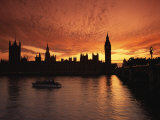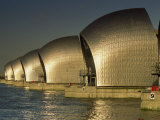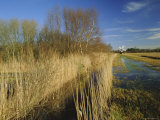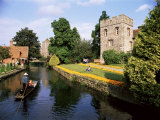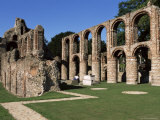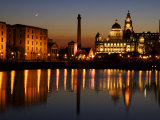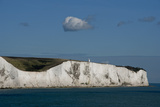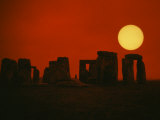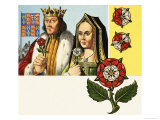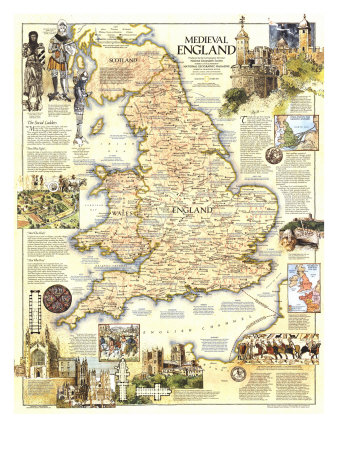|
|
|
|
|
|
|
|
|
|
|
|
BOOKS ABOUT
GREAT BRITAIN
|
|
|
|
|
|
|
|
|
|
|
|
|
|
|
|
|
|
|
|
|
|
|
|
|
|
|
|
 |
|
|
|
|
|
|
Great Britain / England Posters, Prints, Maps & Charts
for the social studies classroom, home schoolers and Angelophiles
|
geography > Europe > United Kingdom > GREAT BRITAIN/ENGLAND | 2 < social studies
|
|
Selection of educational posters of England, one of the constituent countries of the United Kingdom (with Scotland, Wales and Northern Ireland). Posters and fine art prints include London Panorama poster, Queen Elizabeth II and Winston Churchill.
Great Britain is located on an island northwest of continental Europe and east of the island of Ireland.
The largest country in Western Europe blessed with a diverse landscape, Germany is world renownd for charming villages, elegant cities, and magnificent castles rich in history and culture.
|
|
|
London, the capital city and largest metropolitan area of England and the United Kingdom, is the largest urban zone in the European Union.
London is a global city as a center of the arts and culture, education, commerce, education, transportation.
|
|
|
|
The River Thames, which has supported human activity for milleninia, rises in the west-central Cotswold Hills of Gloucstershire and flows through southern England emptying to the North Sea at the Thames Estuary, the world's second largest tidal movement.
Because the Thames is a tidal river, London is under the threat of severe flooding when the conditions of weather and high tide push water up the Thames from the sea. On December 7, 1663 Samuel Pepys wrote in his diary, 'There was last night the greatest tide that was ever was remembered in England to have been in this River, all Whitehall having been drowned.'
The word Thames is from the Middle English “Temese” and derived from the Celtic name for the river; scholars link the word to Sanskrit and Irish words that means “dark”.
The Thames Tunnel, engineered by Marc Brunel, was the world's first underwater tunnel.
• more River posters
|
|
The Fens are a marshy area in eastern England, lying around the area of coast known as the Wash. The fens are similar to the low lands of the Netherlands. The Fens have been drained by pumps and protected from floods by banks for agricultural purposes.
This area of England is also known for the many cathedrals, such as Ely. The name Ely comes from the Old English El-ge meaning “eel region” as the marshes were a home to eels.
|
|
|
|
|
|
|
Colchester, as the oldest recorded Roman town in Britain, claims to be the oldest town in Britain.
Pre-Roman king Cunobeline (Cymbeline) minted coins there, and both Pliny the Elder and Tacitus mentioned the town in their histories.
The name Colchester is from the Latin place-name suffix chester (cester, caster) for castrum or fortified place, though local legend has the town as the home of Old King Cole.
Colchester is also cited as the source of the Humpty-Dumpty rhyme, Jane Taylor wrote the rhyme Twinkle Twinkle Little Star there, it has been suggested as a potential site of Camelot (based on the Celtic name Camulodunon), part of Daniel Defoe's Moll Flanders is set in Colchester, George Orwell mentions Colchester as where bombs fell in his novel Nineteen Eighty-Four, and Doctor Who has several episodes set in the town.
Other people associated with Colchester: Margaret Thatcher, John Ball, Sir Roger Penrose.
Most Ancient European Towns Network: Argos, Beziers, Cadiz, Colchester, Cork, Evora, Maastricht, Roskilde, Tongeren, Worms.
|
|
|
|
Liverpool, located on the Mersey Estuary, is a major seaport in England. Areas of the city, such as the Pier Head and the “Three Graces” of the Royal Liver Building, the Cunard Building and the Port of Liverpool Building have declared UNESCO World Heritage Sites.
Edward Elgar dedicated his famous Pomp and Circumstance to the Liverpool Orchestral Society, and Carl Gustav Jung had a dream involving Liverpool (“Liverpool is the ‘pool of life’” that he described in Memories, Dreams, Reflections, 1928).
Notable people associated with Liverpool include the Beatles, Rex Harrison, Jeremiah Horrocks, Walter Crane, Robert Morris, Ken Robinson, George Stubbs, Alfred Waterhouse.
|
|
|
|
White Cliffs, the part of the British coastline facing the continental Europe across the English Channel, reach up to 350 feet and are composed mainly of chalk. The Straits of Dover, a section of the English Channel just 21 miles wide, separate corresponding chalk cliffs on the European mainland.
|
|
|
|
Stonehenge is one of the most important and visited prehistoric monuments in Britain. The stones are composed of bluestones from the Preseli Mountains in southwest Wales. They weigh up to 4 tons each and were dragged on rollers and floated on rafts on their 240 mile journey. The larger stones are sarsen stones, which were probably brought from Marlborough Downs near Avebury, about 20 miles north of Stonehenge.
• more Stonehenge posters
• more Sun posters
|
|
|
|
The Tudor Rose is the floral emblem of England, being associated with the War of the Roses fought between the houses of Lancaster and York, whose heraldic symbols were the “red” and the “white” rose, for the throne of England.
The alternating red and white signify the joining of the varying factions.
|
|
|
|
Castles ~ The age they sprang from faded long ago, the imposing castles and soaring cathedrals that grace the landscape keep England's medieval heritage vividly alive. They stand as monuments of the tumultuous Middle Ages, a millennium that saw a united England emerge from a caldron of diverse peoples set to boiling when the last Roman rulers left in about A. D. 400. England then lay open to invaders - first the Angles, Saxons, and Jutes, who established kingdoms. Later from the north thundered fleets of fierce Danish and Norwegian Vikings, who pillaged England from the ninth to the eleventh centuries - a time when the Northmen dominated the seas from Russia to North America. Their ferocious hit-and-run attacks escalated into the Danish wars of 865-896, during which Alfred the Great successfully defended his kingdom of Wessex - the only English domain then eluding the Scandinavians. But a century later another sustained assault by the Vikings ended with conquest, and England was finally united under the Danish King Canute. The Viking influence survives today in many of England's place-names, and in occasional words still spoken in the north.
The last major invasion came in 1066 from neighboring France. The Normans brought a new, French-speacking nobility; they set about building larger fortresses to stave off rebellion and outside attack. To those castles even the initially restive native English eventually looked for protection.
For solace in a world marked by hardship, the closeness of death, and the fear of hell, people looked to religion. Churches became centers of social life as well as places of worship. Prayer and learning thrived, first in the monasteries, later in the universities. At oxford and Cambridge, both established by the early 13th century, were sown the seed of law, theology, science, art, and philosophy that today influence man's view of himself and his world.
The Social Ladders ~
“Men who pray, men who fight, and men who work.” The ingredients for a well-run kingdom according to King Alfred, who reigned from 871 to 899, reflect a view of the world as a divinely inspired hierarchy. His age believed that God designed two parallel social ladders. At the top of one the pope stood over the clergy. On the secular side stood the king, the nobility, and peasantry. Though each had his prescribed niche, the system permitted mobility.
“Men Who Fight” ~
From the idea of courtly love, embodied in the nobility, spring notions of the age of chivalry: the dashing knight, pur in purpose, brave in war, ardent in romance, steadfast in allegiance. Foremost, however, were the nobleman's roles of administrator and soldier. From his manor he managed landholdings that nourished the domain. For the king he would lead his own men into battle to protect the realm. In return the noble shared in the kingdom's land and wealth and savored the court's pomp and pleasures.
“Men Who Work” ~
England was a land of villages, and the village was center of the peasant's world. To the village he returned after tending the field. Close by lived the lord, who under the feudal system claimed the peasant's service and a share of his production. In the village church the peasant prayed for an easier existence in the hearafte. But an enterprising peasant could prosper on the earth by working land left with no one to tend it, especially after the plagues that decimated England's populace.
“Men Who Pray” ~
God's shepherds were separate from, yet commingled with, the laity. Parish priest, friar, monk, abbot, and bishop all follwed the pope. But though they were pastors to their flocks, clergymen were often social leaders too. And the higher echelons enjoyed privilege: immunity from any but the church's laws, the comforts of estate ownership, the right to sit in Parliament, and the standing to frequent the courts, where they rubbed shoulders with their secular counterparts.
• more Middle Ages posters
|
|
previous page | top
|
|
I have searched the web for visual, text, and manipulative curriculum support materials - teaching posters, art prints, maps, charts, calendars, books and educational toys featuring famous people, places and events - to help teachers optimize their valuable time and budget.
Browsing the subject areas at NetPosterWorks.com is a learning experience where educators can plan context rich environments while comparing prices, special discounts, framing options and shipping from educational resources.
Thank you for starting your search for inspirational, motivational, and educational posters and learning materials at NetPosterWorks.com. If you need help please contact us.
|
|
|














